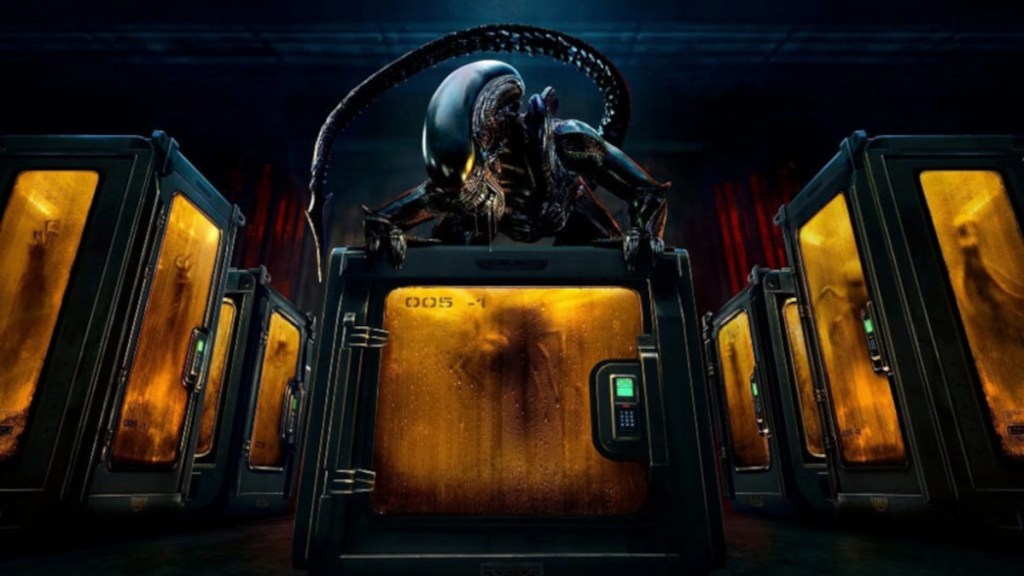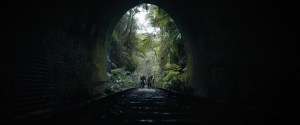Alien: Earth has premiered its first two episodes on FX-Hulu, and it already seems like an overwhelming majority of fans are enjoying showrunner Noah Hawley’s (Fargo, Legion) take on the Alien franchise. That said, Alien: Earth experienced more turbulence going from production to the screen than the spaceship whose fiery crash-landing kicks off the events of the show. One of the biggest points of both confusion and tension in the development of Alien: Earth was its place in the franchise timeline. By ultimately setting the show two years before the events of the original Alien (1979), the Alien TV series immediately invited a lot of probing questions from diehard fans and continuity purists.
Videos by ComicBook.com
Well, two episodes aren’t enough to answer all the questions floating around the Alien fandom; however, Alien: Earth may have created space for fans to explain one of the bigger continuity issues that has plagued the Alien franchise for over a decade now.
Prometheus & Alien Covenant Created Some Big Problems

In the 2010s, Alien director Ridley Scott finally returned to the franchise… sort of. Scott endeavored to make a prequel film/spinoff of Alien, titled Prometheus (2012), which eschewed the traditional prequel format to examine deeper themes of creationism and new scientific theories (of the time) about extraterrestrial life and its possible connections to Earth’s origins. While Prometheus was a modest box office hit by modern blockbuster scale, its $403.4 million haul is still the highest for the Alien franchise (ignoring inflation), and its reputation as a heady sci-fi/horror cult-hit has only grown with time. The biggest criticism from fans, however, was that Prometheus only gave fans barest sketches and inferences about the origin of the facehugger parasites, the xenomorph drones, and the crashed ship on LV-426 in the original film.
Scott’s sequel film, Alien: Covenant, tried to be more direct with its prequel ties, but ended up confusing things even further. SPOILERS: The twist ending reveals that Prometheus’s nefarious synthetic, David (Michael Fassbender), has killed and replaced the USCSS Covenant‘s noble android officer Walter (also Fassbender), which was great for shock value, but not continuity. The film posited the idea that it was David who experimented with the black goo of the Engineer species while stranded on their homeworld, used it to genetically engineer the first facehugger eggs, and subsequently gave “birth” to the iconic version of the xenomorphs the franchise is known for. However, that origin story created massive new questions – the most prominent being how David went from spreading xenomorph samples across the galaxy, to an entire Engineer ship full of eggs crashing on LV-426, sealing the ill fate of the USCSS Nostromo and its crew, who are eventually sent by Weyland-Yutani to investigate.
Alien: Earth May Explain the Continuity Gap Between Alien & Its Prequel Films

Alien: Earth showrunner Noah Hawley made the controversial choice to side-step the events of Prometheus and Alien: Covenant, choosing instead to build within the new continuity shared by Alien (1979), and the recent reboot film Alien: Romulus. So while the show may not answer how that Engineer ship ended up on LV-426, it does give the franchise continuity a key off-ramp. The premise of Alien: Earth sees a Weyland-Yutani Corporation space vessel, the USCSS Maginot, crash-land on Earth after a nearly 70-year voyage into the deepest regions of space, searching for dangerous lifeforms. One of the five species the Maginot crew captured is the xenomorphs (obviously), or more specifically, a small collection of facehugger eggs that are brought back to Earth (which promptly hatch and run rampant).
Hawley has now established the retcon that Weyland-Yutani knew the xenomorph species existed decades before the events of Alien. Not just knew about the deadly alien creatures, but coveted them as the ultimate bio-weapons, thanks to the exploration and research done by the Maginot. Hardcore fans could extend the theory even further to fully connect the franchise continuity, to include the idea that the Maginot was actually sent out by Weyland-Yutani to track down David (a rogue company android), the USCSS Covenant (a company colonization vessel), or both. That could explain how the Maginot crew eventually discovered and captured the facehugger eggs, after catching up with David.
Whether you include Prometheus or Covenant in the theory or not, the franchise continuity is now cemented in the fact that Weyland-Yutani had knowledge of xenomorphs before the events of Alien, as well as motivation and means to keep searching for new xenomorph samples, after the ones in Alien: Earth presumably get destroyed (eventually). This retcon makes the fate of the Nostromo even more tragic, as it now seems like Ripley and her crewmates were purposefully sent to LV-426 as sacrificial lambs. It’s why the company was so quick to label the crew expendable, and why secret orders were given to synthetic officer Ash to ensure the xenomorph sample got delivered. The company didn’t want to fail a second time to collect it. By the time of Alien: Romulus, Weyland-Yutani eventually gets its wish (third time’s the charm): xenomorph DNA it can use to reverse-engineer the all-powerful (and volatile) Prometheus serum.
Alien: Earth is streaming on FX-Hulu.









